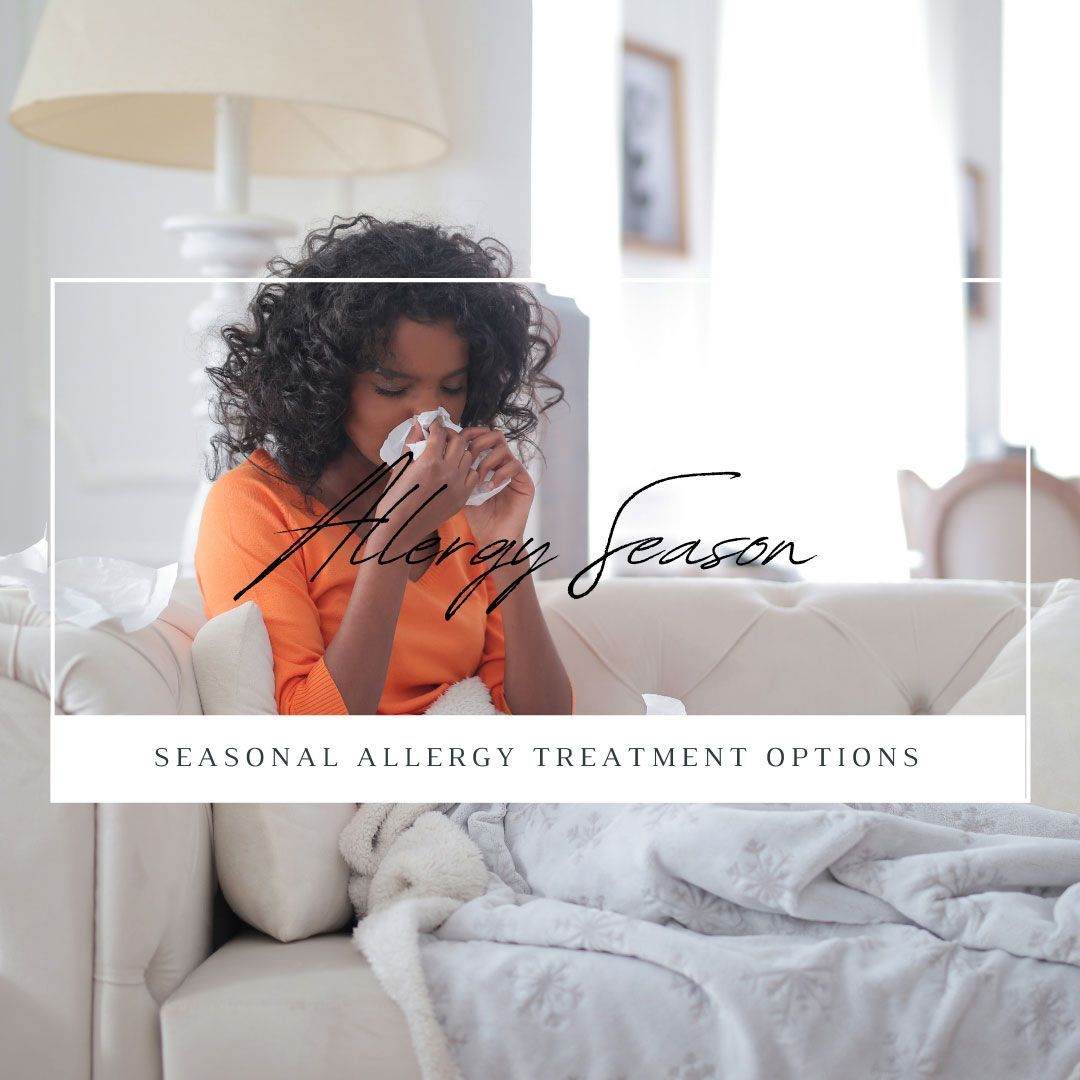ACCEPTING NEW PATIENTS
Seasonal Allergy Treatment Options

Allergic Rhinitis affects 10-30% of people in the United States. Environmental factors are likely responsible for the increase in prevalence (especially in urban areas). Mid-August marks the start of yet another allergy season in the Houston area.
Pollen is the most common trigger for seasonal allergies and is very prevalent in the Houston area. From mid-Jan to April (due to trees), then in April and May (from grass), and mainly from ragweed from mid-August to early November. Another trigger for seasonal allergies is mold spores, which grow when humid, wet, or damp.
What are the symptoms of seasonal allergies?
Symptoms of seasonal allergies include sneezing, runny nose, nasal congestion, postnasal drainage, and itching of the eyes, nose, and palate. These symptoms can be quite burdensome as they can affect sleep, school or work function, and the ability to participate in leisure or sports activities.
Who gets seasonal allergies?
Most people start to have seasonal allergies in childhood or young adulthood. Seasonal allergies are uncommon under the age of 2, as it takes a few years to develop. It also uncommonly presents for the first time in older adults unless there is a significant change in environment. Seasonal allergies tend to run in families and are usually lifelong but may be better or worse at different times.
How do I lower my risk of having symptoms if I have seasonal allergies?
You can avoid or limit exposure to allergens when you:
- Stay away from mowing the lawn, pulling weeds, and gardening that can stir up pollen.
- Stay indoors when it’s dry or windy or when pollen counts are high. (Rain helps clear pollen from the air, so going outside after it rains is best. Pollen counts are highest early in the morning).
- Change your clothes when you get indoors and shower to rinse pollen from your body and hair.
- Don’t hang laundry outside as pollen can stick to clothing.
- Wear a pollen mask.
How do I treat seasonal allergies?
- Steroid nasal sprays are the most effective single maintenance treatment for seasonal allergies. Some examples are fluticasone (Flonase), mometasone (Nasonex), triamcinolone acetonide (Nasacort), budesonide (Rhinocort), beclomethasone (QNASL).
- Antihistamine nasal sprays such as azelastine or olopatadine are also effective and can be used with nasal steroids.
- Second-generation antihistamines like cetirizine (Zyrtec), levocetirizine (Xyxal), loratadine (Claritin), desloratadine (Clarinex), and fexofenadine (Allegra) are also useful.
- Antihistamine eye drops may be added if eye symptoms do not respond to the medications above.
- Cromolyn nasal sprays can be used when you would like to avoid nasal steroids sprays (typically in young children).
- Rinsing out your sinuses can also be helpful for those that have frequent symptoms.
- Allergy immunotherapy with allergy shots or drops, which exposes you to tiny amounts of the allergen, is very effective in reducing symptoms.

At InTouch Primary Care, we have a personalized approach to preventive health. We take the time to listen and work closely with you.
We offer allergy blood testing and allergy immunotherapy with allergy drops. With high-quality, consistent care, we can work with you to become and stay healthy.
To become a patient, click on Schedule Now, and we will be in touch. You can also Contact Us if you would like more information. Share if you found this helpful.
Phone: (713) 280-9985
Email: info@intouchprimarycare.com
Address: 2333 Town Center Dr, Sugar Land, TX 77478, United States of America
- Mon - Thu
- -
- Fri - Sun
- Closed
- Mon - Thu
- -
- Fri - Sun
- Closed
